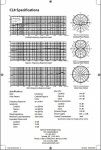Looking to record a singer/songwriter and am using the "two figure 8 mic" technique to maximize separation between guitar and vocal. Neither of my cheap variable pattern LDCs seem to have a well-defined off-axis null, just enough to know the technique works, but still more bleed than I'd like. Any recommendations for better mics to use? I'd like to keep it under $500 per mic. Thanks!
- Denny
- Denny



